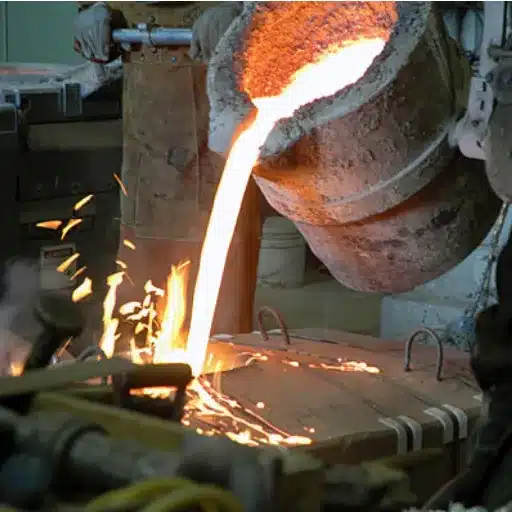Steel fabrication processes like welding have found broad applications in construction, manufacturing, and even aerospace. Being as durable and corrosion resistant as stainless steel is, it still poses some challenges during fabrication processes, particularly while welding. To ensure the structural integrity and increase the usable life of stainless steel components while aiming to eliminate these cracks, it becomes important to understand them fully. This blog helps understand why cracks are caused during welding and the thermal stress, metallurgical properties, and improper welding techniques that lead to them. This blog will also present practical advice for these concerns, which would help professionals and enthusiasts aiming to learn the intricacies of steel welding.
What Causes Weld Cracks in Stainless Steel?
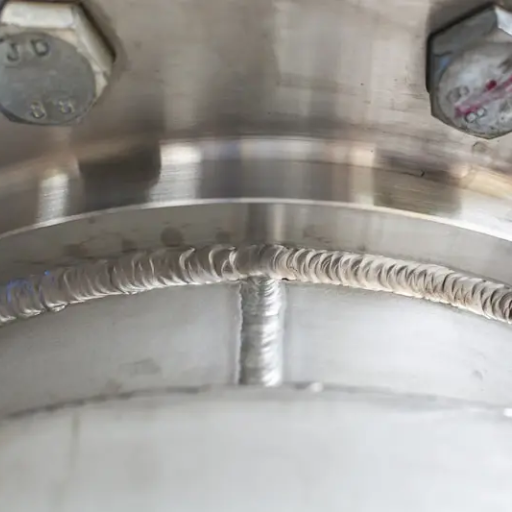
A number of factors contribute to Weld cracks in stainless steel, the most noteworthy including thermal stresses, welding practices, and metallurgy. Having a high thermal conductivity difference creates residual stress in the welded joints due to uneven cooling. Furthermore, the presence of dye chemicals such as sulfur or phosphorus could worsen cracking. The metallurgical domain also fails in terms of brittle zone creation alongside border carbides, leading to tissue precipitation. Employing controlled welding methods along with treating and caring for weld fillers yields no cracks in welds.
Understanding the Welding Process and Material Properties
Understanding the welding process and the material’s properties is vital for achieving quality welds. Every material has a unique response to heat and stress, which affects the welding technique selected. For example, preheating and post-weld treatments are essential, not optional, for cracking prevention in high-strength steels. Focusing on heat input, filler material, and joint design aids in achieving dependable welds with minimal defects. It has always been clear to me that mastering these principles requires intellectual creativity, and they distinguish good welds from great ones.
The Role of Impurity and Residual Stress
Remaining stresses and impurities can significantly affect the performance and durability of welds. Sulfur, phosphorus, and hydrogen, these contaminants worsen weld brittleness and heighten cracking vulnerability during dynamic loading or harsher environmental conditions. Managing these impurities demands thorough material requirements alongside efficient pre-weld cleansing methods. While leftover stress is caused by non-uniform cooling during welding, it can still negatively impact structural strength. Post-weld heat treatment (PWHT), stress-relief annealing, and appropriate sequential welding can greatly reduce these de-stress conditions and improve weld strength.
How High Temperature Influences the Cracking of Stainless Steel
I want to explain how high temperatures affect the cracking of stainless steel in layperson’s terms. Consideration of aspects like temperature, material selection, welding, and other processes cannot be neglected, as they have a severe impact on the efficiency and life of stainless steel. For better understanding, I have simplified a more watch-for list to help you:
- Thermal Expansion
The expansion of stainless steel due to an increase in temperature can lead to thermal stresses, particularly when parts are constrained or engaged with other materials. The accumulation of these stresses over time can result in cracking.
- Sensitization
Between 800°F – 1600°F (427°C – 870°C), stainless steel can undergo sensitization. During this phase, chromium will react with C to form chromium carbides at the edges of the grains and will further reduce the resistance to corrosion, therefore increasing intergranular cracking.
- Creep
When stainless steel is subjected to high temperatures for long periods of time, it undergoes time-dependent creep. This change gradually weakens the material, increasing the chances of crack initiation and propagation.
- Corrosive Environment
When present in a corrosive or oxidizing environment at high temperature, the protective oxide layer is prone to degrade leading to increased stainless steel deterioration. Environment specific cracking, such as stress corrosion cracking, becomes far more common.
- Thermal Cycling
Over extended periods, increased and decreased heating can result in fatigue cracking as well. These cyclic stretches and contractions produce places of stress that may evolve into notable cracks if sufficient design and material considerations are ignored.
To lessen the chances of cracking due to thermal stresses, a particular grade of stainless steel needs to be selected as per the application. The welds need to be done with very strict controls on heat input, cooling rates, and other relevant factors of the environment. By following these parameters, the issues with cracks can be reduced significantly or even eliminated.
How Does the Type of Stainless Steel Affect Cracking?
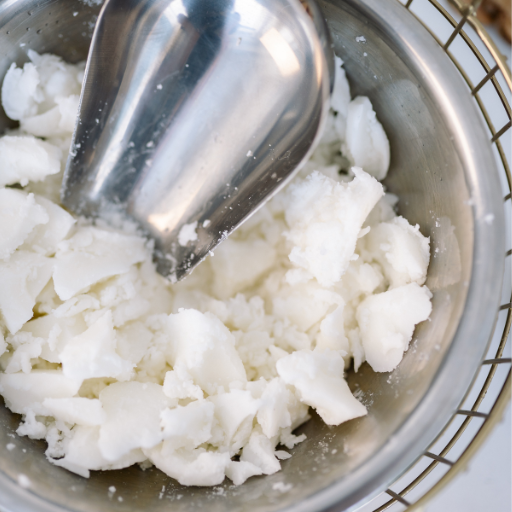
Due to its composition and microstructure, the type of stainless steel used greatly impacts the likelihood of cracking. For instance, Austenitic stainless steels are more susceptible to stress corrosion cracking in high temperatures and chloride-rich environments compared to duplex and ferritic stainless steels that Fair better in those conditions. The choice of stainless steel should be made with the environmental context and application requirements to reduce the risk of cracking.
Differences Between Austenitic Stainless and Other Types
The main difference between austenitic stainless steels and the rest appears to be in their composition and properties. Nonmagnetic austenitic stainless steels have high chromium and nickel contents, which give them remarkable corrosion resistance, even in harsh environments. This same composition, however, has the potential to increase susceptibility to stress corrosion cracking under some conditions. Ferritic and duplex stainless steels, on the other hand, have lower levels of corrosion resistance but possess greater structural stability and resistance to cracking in chloride-rich or high-temperature environments. The balance between these types is made based on application needs and other physical environmental factors.
The Impact of 316L Stainless Steel on Weld Quality
The low carbon content of 316L stainless steel increases weld quality because it decreases the chances of carbide formation during welding on the valuable interfacing surface (VIS). This characteristic provides better corrosion resistance on the borders of the heat-affected zones (HAZ), which is important in molecularly propelled robotics capable of deep-sea exploration. Moreover, 316L has good ductility and weldability, which allows accurate and strong welds to be made without damaging structural strength. These factors make 316L stainless steel an especially important alloy for critical applications where the strength of the welds must be of the highest precision.
What is the Difference Between Hot and Cold Cracking?
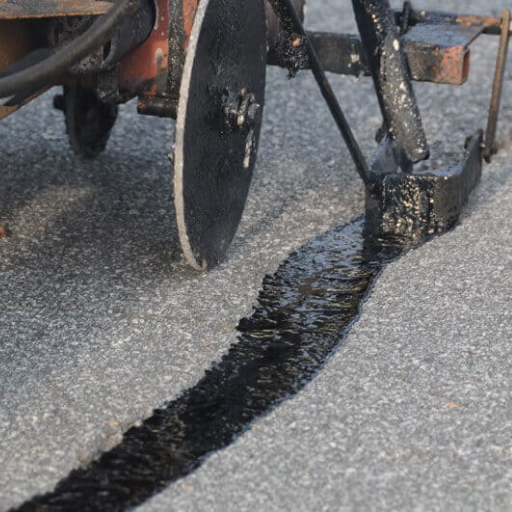
Different conditions cause welds to fail in unique forms, categorized as hot cracking or cold cracking. During hot cracking, or when cracks are formed at incredibly high temperatures, the solidification of the weld directly after welding initiates the defect. This is usually caused by low-quality joint designs or the presence of additional unwanted elements (impurities). The second type, cold cracking, develops at lower temperatures and is defined by the time of occurrence as days or hours after welding. The root causes include mechanical tensions for steam, hydrogen, and brittle crystalline structures formed during welding. Both types of cracking can be alleviated with proper material selection, preheating the workpieces, and post-weld treatments.
Identifying Hot Cracks in Stainless Steel Welded Applications,
the first step always has to do with finding the reason behind the problem. As hot cracks, I am sure you are aware, usually form due to the weld’s cooling phase in the solidification process. Here is how I go about the steps to identifying them:
- Material Composition: Certain grades of stainless steel, particularly those with high sulfur or phosphorus content,t hot crack more easily. These impurities cause localized melting and increase the likelihood of cracks forming. If your material has a high level of impurity, it might be beneficial to use a better grade of stainless steel with less impurities.
- Joint Design: A commonly neglected area is a poorly optimized joint design, which has a significant impact here. Welds that are restrained and limit the movement towards the cooling shrinkage region add more stress which can cause cracking. Allowing groove motion that permits thermal displacement is an absolute necessity.
- Welding Parameters: Picking the pertinent parameters is vital. Pay close attention to the following:
-
-
- Heat Input: An increased heat input can further widen the temperature gradient, which in turn increases the solidification stress.
- Welding Speed: Impurities tend to jam at slower welding speeds. These impediments aggravate the worsening situation.
- Filler Material: Ensure that the filler material’s composition is compatible to assist with the reduction of hot cracking susceptibility.
-
- Preheating: While it isn’t common to require preheating with stainless steel welding, applying mild preheat in some circumstances can alleviate the thermal gradients and the possibilities of cracking.
- Post-Weld Inspection: At times, cracks won’t be readily visible, therefore I employ dye penetrant inspection or ultrasonic inspection techniques for test evaluating welds immediately after welding in order to capture any potential discrepancies.
When these parameters are well analyzed and controlled, discovering and preventing hot cracks becomes considerably easier. Always bear in mind that for a given welded application-tailored material, an in-depth understanding of its rheological and thermal properties may be useful in reducing risksd cracking.
Understanding Cold Cracking and Its Causes
Also known as delayed cracking, cold cracking mostly happens in the presence of hydrogen in the weld, residual stresses, and a brittle heat-affected zone (HAZ). It usually occurs hours or even days post-welding, complicating detection and repair. Measures aimed at preventing cold cracks include appropriate preheating of the materials, controlled cooling rates, withdrawal of hydrogen electrodes, and the removal of contaminating hydrogen sources like moisture and oil. Understanding how all these factors interact is critical in untangling the ever-growing web of risks cold cracking poses on welded joints.
What Role Does the Welding Stress Play in Stainless Steel Cracking?
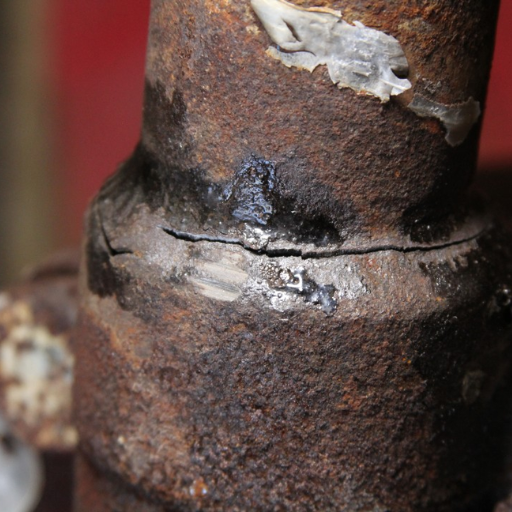
I have come to learn that welding stress plays a major role in causing stainless steel cracking due to the accumulation of residual stresses in the component. While welding, the stainless steel undergoes non-uniform thermal expansion and contraction, giving rise to stress concentrations. If these stresses are above a set limit, the material can yield, causing distortion or crack propagation in the heat-affected zone (HAZ). Factors such as adequate joint configuration, preheating, and postoperative thermal treatment significantly mitigate these stresses and enhance the durability of the welded structure.
Examining the Welding Cooling Process and Residual Stress
Both the welding cooling process and residual stress as to the integrity and performance of a welded structure are important, and from my experience, both contribute. Residual stress is created during welds because of the nonuniform cooling of the material. This is how it works and what I think is most important:
- Cooling Rate: The speed at which a material cools is one of the most significant factors in the formation of residual stresses. If cooling is too rapid, there will most likely be a greater degree of stress. This occurs because the surfaces of the weld extrude quickly, pull back, and contract. The inner portions of the weld, however, take a lot more time, thus creating uneven tension within the weld. There are many ways to control the cooling rate, such as using preheating or controlling the interpass temperatures, and these can lower residual stresses significantly.
- Heat Input: The measure of heat given out while welding influences the cooling in the process. The heat supplied is directly proportional to the area that has been impacted thermally which is referred to as the HAZ. This leads to an increased odds of stress accumulation. It is crucial that the supplied heat matches the thickness and the design of the joint of the material.
- Material Properties: Metals respond differently to thermal cycles. Take for instance the steel which is considered stainless owing to its non-corrosive nature. It actually has a lot more thermal expansion and stress build up than its counterparts. Knowing the specific values of thermal conductivity, expansion, yield strength of the material allows the predicting of stress related problems which allows for mitigation of such issues.
- Post-Weld Heat Treatment (PWHT): One of the most efficient methods for relieving remaining internal stresses is by using this method. By heating the welded part to a predetermined temperature below the recrystallization temperature, followed by uniform cooling, all stresses within the component are relieved, and the entire structure becomes uniform.
- Welding Sequence and Joint Design: The development of residual stresses is dependent on the order in which welding is performed. In the case of intricate structures, devising an optimal plan for the sequence of welding will evenly distribute the stresses in an effective manner. Also, joint designs that reduce stress concentration, such as bevels or spaced welds, are more efficient for controlling residual stress.
In conclusion, the handling of the welding cooling sequence entails an intricate administration of the control of heat input, the heat interaction with materials, and the application of processes such as PWHT. This approach guarantees that the residual stresses will not adversely affect and compromise the safety, reliability, and operability of the welded structure.
Strategies to Mitigate Welding Stress in Stainless Steel Welded Joints
Drawing from my background in welding, to alleviate welding stresses in stainless steel joints requires a unique blend of skill, knowledge of the work materials, and strategic foresight. Stichomsailing Bridge stresses Spectrum of stress in welding is best dealt with in particular details in the best order. Overheating control is another area of concern, especially in welding, as it is an important factor in thermal distortion. Stress can also be relieved by controlling the boundaries of preheating and tempering the exponent ribs. Minimization of filler microsegregation is best achieved by the right choice of filler material, which changes the likelihood and greatly reduces the risk of microsegregation. Advocacy for post-weld heat treatment by self-aid filling borderline cases, particularly for hardenable material, is highly recovering from stress and also provides better residual strain and strength in these cases where stress is dominated. Even so, the use of staggered progression of stress concentration for balance partial cut weld sequence stress relieving orientation is of great importance. Observing the entire process assures, joints of stainless steel are satisfactorily appropriate from esthetic and functional points of view.
How Can One Prevent Welding Cracks in Stainless Steel?
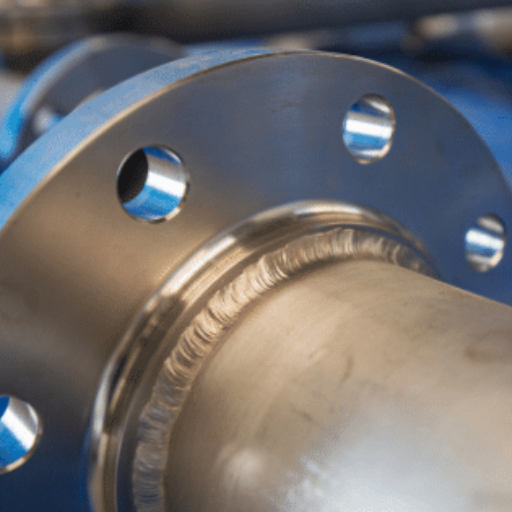
Achieving proper prevention of stainless steel welding cracks requires some key measures to be put in place. For one, choosing the right alloy filler material and properly preheating it to the alloy’s specifications minimizes cracking chances. Cracking risk due to thermal stress, such as weld heat input and cooling rate, must be controlled through the environment. In addition, cleaning contaminants on the base materials and using post-weld heat treatment (PWHT) techniques greatly lowers the chances of cracks. These factors combined ensure welded stainless steel joints are reliable and durable.
Effective Techniques for Welding is an Important Link
effective methods are essential for the successful completion of stainless steel welds. For me, the most critical steps are meticulous prep work for the material and tight control around the welding parameters. Ensuring controlled heat input, selection of appropriate filler materials, and Pyrex glass leads to the prevention of cracking and thermal stress. Also, if warranted, I am a firm believer in post-weld heat treatment. It greatly increases the weld’s lifespan, alongside making it far more dependable. In conjunction, these techniques accomplish polished and durable welds.
Choosing the Right Welding Materials and Parameters
Selectivity for base welding materials starts with the structure of the material and its properties. Like in the case of choosing base solder materials, the base metals should be matched appropriately to avoid segregation of composition. I pay attention to a range of other factors, including baseline temperature and corrosion resistance, which may determine decisions overall. My choices are equally important, for example, setting the right amperage, voltage, and travel speed is essential in producing uniform, precise welds. Through a blend of theoretical concepts, past experiences, and strategic planning, I strive to achieve results that surpass expectations.
Reference
- Do You Know The 5 Major Causes Of Welding Cracks In Stainless Steel Pipes
- Causes of Cracking of Stainless Steel Welded Tube
- Welding Stress Corrosion Cracking: Understanding the Hidden Threat
Frequently Asked Questions (FAQs)
Q: What is the primary cause of welding cracks in stainless steel?
A: The primary cause of welding cracks in stainless steel is the presence of stress concentration and improper heat management during the welding process. Factors such as solidification and stress relaxation can lead to cracks, especially along the grain boundary.
Q: How does the heat-affected zone influence the quality of the welded joint?
A: The heat-affected zone (HAZ) significantly influences the quality of the welded joint as it can alter the microstructure of the metal, leading to potential weaknesses. This zone is prone to corrosion and cracking, particularly in stainless steel welded pipes.
Q: Why are hot cracks sometimes generated during the welding process?
A: Hot cracks are generated during the welding process due to the rapid cooling and solidification of the weld metal, which can lead to stress concentration and crystallization issues. This is particularly true for austenitic stainless steel, where hot cracks are cracks that may be visible on the welding surface.
Q: What is reheat cracking, and when does it occur?
A: Reheat cracking, also known as delayed cracking, occurs in the time after welding when the welded material is reheated, such as during post-weld heat treatment. This can cause the material to harden and develop cracks along the grain.
Q: How can stress corrosion cracks and lamellar tears be prevented in stainless steel welded structures?
A: To prevent stress corrosion cracks and lamellar tears in stainless steel welded structures, it is essential to control the welding residual stress, use appropriate alloys, and ensure proper heat treatment. This helps reduce the likelihood of cracks and lamellar tears according to the quality of the product.
Q: What role does solidification play in causing cracks in 316L stainless steel?
A: Solidification plays a critical role in causing cracks in 316L stainless steel, as it can result in stress accumulation and improper crystallization along the grain boundaries. This can be exacerbated by improper cooling rates and weld metal composition.
Q: Are welded joints of stainless steel prone to cracking more than those of carbon steel?
A: Yes, welded joints of stainless steel are generally more prone to cracking compared to those of carbon steel due to their complex microstructure and susceptibility to stress concentration and corrosion.
Q: What is the effect of stress relaxation on stainless steel welded tubes?
A: Stress relaxation can lead to the formation of cracks in stainless steel welded tubes as the material undergoes shifts in stress distribution over time, especially if not properly managed through heat treatment and controlled cooling stages.
Q: How does metal processing affect the likelihood of cracks in stainless steel pipe?
A: Metal processing can affect the likelihood of cracks in stainless steel pipe by influencing the grain structure and introducing residual stresses. Proper processing techniques and post-weld treatments are crucial to minimize these effects.
Q: What are the best practices to prevent cracks immediately after welding?
A: To prevent cracks immediately after welding, it is important to control the cooling rate, use compatible alloys, and apply appropriate heat treatment. Managing the heat-affected zone and stress concentration can greatly enhance the durability of welded structures.

